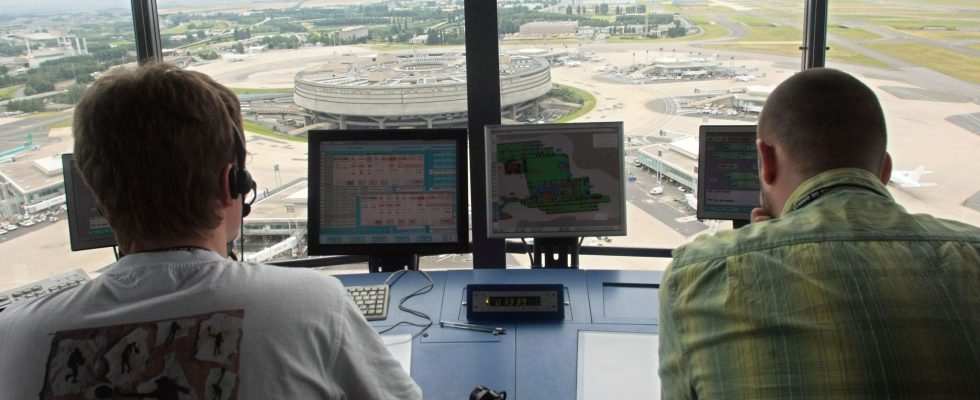The air traffic controllers’ strike promises to be massive this Thursday, April 25, with more than half of flights canceled throughout France. In the catalog of salary demands – increases of 15% over three years, allowances and bonuses of all kinds – accompanying the notice from the SNCTA, the main union in the profession, an intriguing demand: the granting of eighteen days of “recovery” additional per year.
The reason ? These three and a half weeks of rest would be supposed to compensate for the elimination of “clearances”, these small arrangements between switchers which mean that some grant others absences – not deducted -, when the traffic situation is supposed to allow it. A “hidden system”, long denounced by the Court of Auditors. “These “clearances” – the term used to designate this irregular practice – make it possible to further reduce the effective working time of controllers: this can probably drop to less than a hundred days per year without it being possible to advance a more precise figure due to the unofficial, but admitted, nature of this practice”, pointed out the Court’s annual report in 2010, after an investigation by the Figaro raised the hare.
Fifteen years of inertia
At the time, the Directorate General of Civil Aviation (DGAC) admitted the existence of the phenomenon. But she recognized her difficulty in controlling it, “in the absence of an attendance clocking system or contradictory monitoring of position keeping records established by team leaders.” Fifteen years (!) later, the DGAC has finally tackled the problem, announcing the implementation of new tools to check that everyone is in their position. But a tragedy had to be narrowly avoided for things to finally move forward.
On December 31, 2022, an easyJet Airbus, landing at Bordeaux-Mérignac airport, almost hit a Robin DR-400 positioned on its runway. It was upon seeing the A320 dangerously approaching his aircraft that the pilot of the small tourist plane himself warned the control tower, where no one saw anything coming. Alerted, the Airbus immediately went around again.
One year after the events, the Bureau of Investigations and Analysis (BEA) of civil aviation published a 63-page report. Several passages are edifying. “On the day of the serious incident, we can read, the duty roster provided for the presence of six controllers. Before the shift, the tower manager had, in agreement with his team, modified downwards the planned staff to three controllers at the time of the serious incident.”
Further: “It appears from the various interviews carried out by the BEA during the investigation that tower managers can take the liberty of deciding, in consultation with their team, on a lower number of controllers present than that provided for by the duty roster and arrival and departure times of the various controllers These decisions, which are not part of the official responsibilities of the tower manager, are internal to the team and are not traced or communicated to the management of the tower. control center.”
Only means of control: the parking badge
A state within a state, in short, of which BEA investigators have managed to uncover some secrets. “This parallel organization of internal work within the teams […] is facilitated by the use of external Internet tools not managed by the DGAC, allowing controllers in particular to organize their actual presence time at their workplace.” As for the equipment making it possible to control the presence of controllers on the site, the only ones capable of fulfilling this role are… badge systems for accessing car parks. And again. “These systems differ from one center to another,” says the report. In some centers, these systems only record entry to the site and not exit. In other centers, these systems are even non-existent. […] As part of the investigation, it was reported to the BEA, by various sources, the existence in certain control centers of the practice of “parking U-turn”, consisting of badges at the entrance to the parking lot at the start of the session and to come out immediately.”
Faced with such uses, which obviously conflict with the safety requirements of such a critical profession, the Unsa of air traffic controllers does not hesitate to criticize, in a recent leaflet, “a report against the BEA”. And to speak out against “the installation of time clocks on site to monitor us and rationalize our working time”. Or how to brush aside, in the name of corporatism, otherwise legitimate questions about passenger safety.
.
